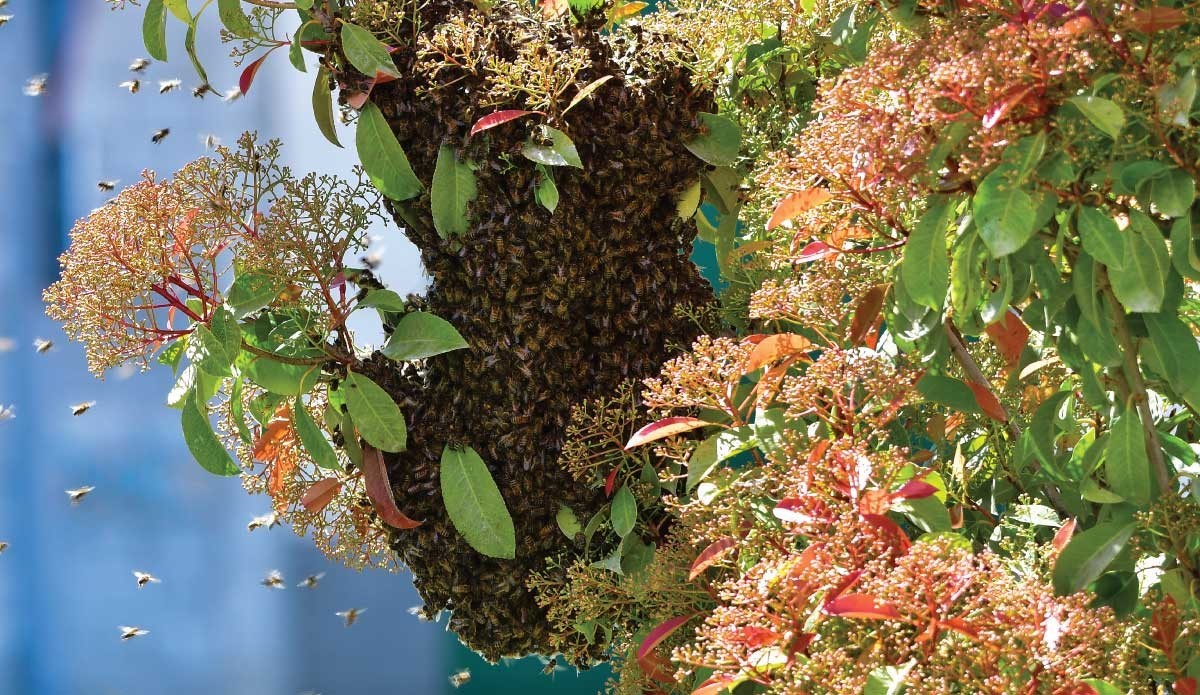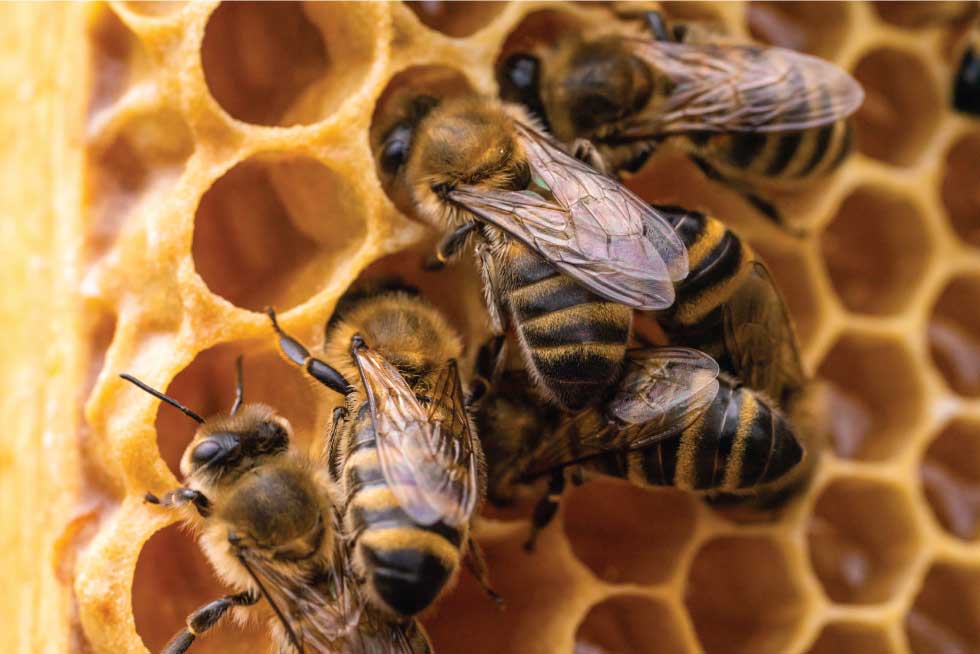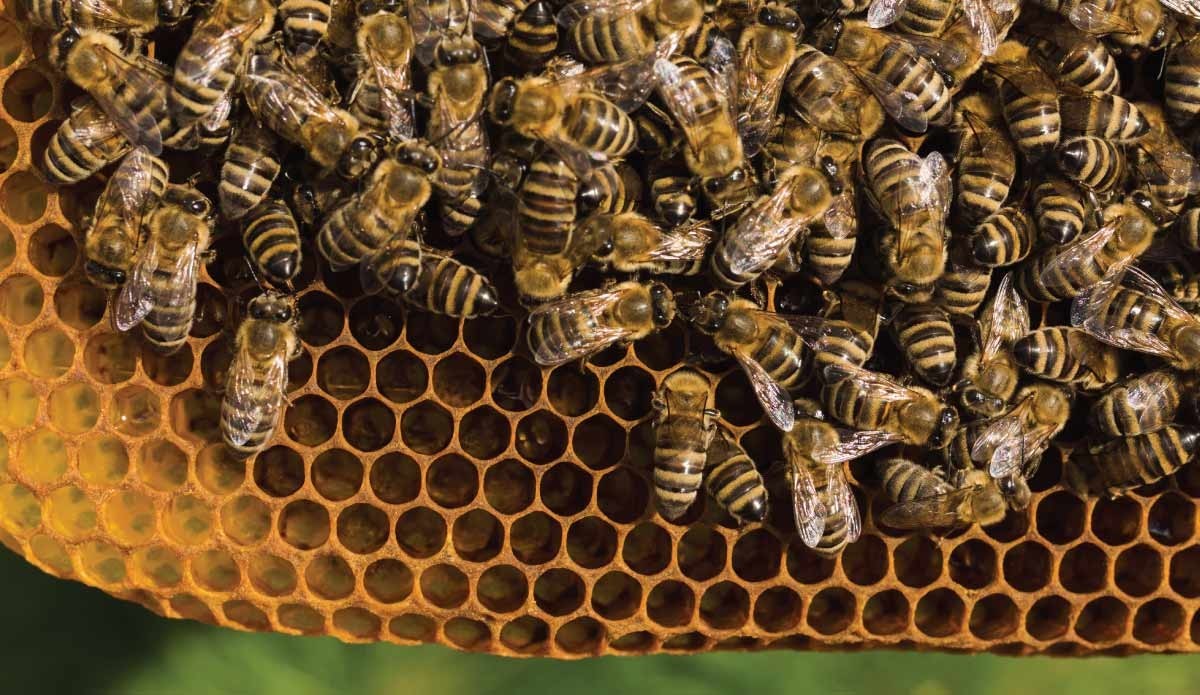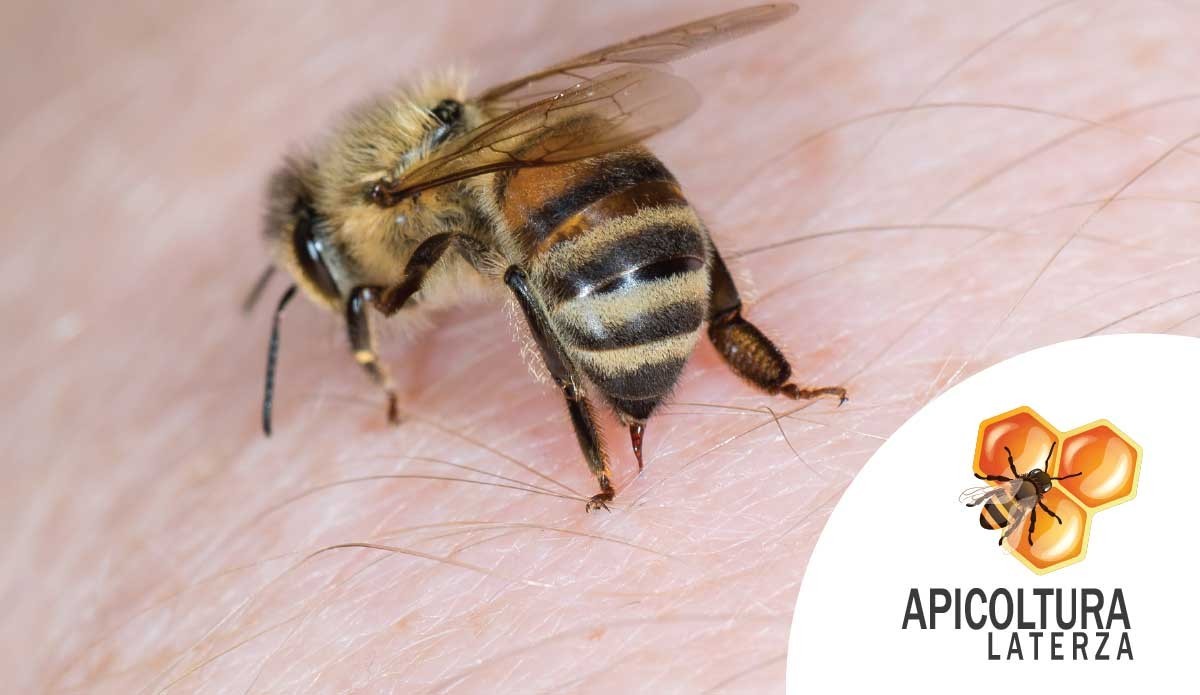How life works in hives: the work of bees

The daily activities of the colony are truly endless
From the care of the larvae to the cleaning activities, life in the hive is really hectic. Bees perfectly cope with these rhythms and present themselves as tireless animals. For this reason, many have come to believe that bees didn't sleep at all!
Actually, these insects have very little moments of rest. During the day, bees sometimes take short naps of about 15-30 seconds at a time.
The work of bees inside the hive requires continuous activities. Their coordination creates a perfect mechanism. The success of the bees is linked to the silent work that takes place every day inside the colonies. In a hive, everyone does their job - building the nest, organizing food, regulating the temperature, caring for the larvae. All the tasks are well defined and follow impeccable rules.
Let's find out together what activities bees carry out inside hives and how swarms manage to coordinate the work of thousands of individuals.
Care of the larvae and cleaning of the hive
Each hive has a large number of cells inside which honey is stored. In addition to this, the hexagonal cells are structured to also accommodate the development of the larvae . The queen bee in fact lays thousands of eggs a day inside the cells. From the eggs then, new individuals will be born that will populate the colony.
The care of the larvae is up to the worker bees, especially the nurse bees . Every day, the nurses feed the larvae with royal jelly (for the first three days) and subsequently with honey and pollen.
As for the cleaning of the hive, also in this case the bees are very organized. Keeping the hive clean is absolutely necessary to survive. Since the swarms are made up of a large number of individuals, the formation of bacteria and pathogens could spread from one component to another very quickly.

For this reason, the scavenger bees constantly dedicate themselves to cleaning the hive . A small part of the swarm also takes care of the removal of corpses . The gravedigger bees try to keep the colony always healthy and clean to reduce the health risk posed by a corpse.
Bees are able to spot their dead mates within 30 minutes of death, long before the body begins to decompose. Within the colonies there is a lot of attention to cleaning. Their constant work prevents the formation of any risk factors.
Collection of nectar and pollen and production of honey
After the part relating to the care of the larvae and cleaning, there is obviously a need to take care of the food. Bees must be able to store enough honey to feed colonies of around 50,000 individuals. In the case of strong swarms, individuals can be even more numerous.
To produce honey, bees first need to stock up on pollen and nectar. The foraging bees take care of this. This category of bees travels long distances every day, taking care of transporting raw materials to the hive. Foraging bees perform continuous round-trip flights to transport the nectar of the flowers to their establishment.
Once the raw materials are obtained, for the production of honey, the bees carry out some really interesting processes. First of all they process the collected substances and mix them with their enzymes (via saliva). Subsequently, the bees apply a ventilation process that eliminates the water present in the substance.
The elimination of water allows the honey to be preserved without decomposing, preventing the formation of molds, fungi and bacteria that instead need moisture to develop.
Queen bee care
In addition to honey, bees also produce royal jelly for the nourishment of the queen bee which is entitled to "delicious" food compared to other bees. The workers take care of keeping their queen bee always healthy and strong, providing for any of its needs. The swarm also takes care of regulating the temperature in the hive.
Workers always keep their queen warm and ensure her excellent health. The queen without her workers would not be able to provide for herself.
Bees have this strong dedication to the queen as she is the only fertile specimen in the entire colony. The queen is the key to the whole functioning of the hive. Without reproduction and without the replacement of bees, a swarm would die in a very short time.
Coordination of the work of bees: how is this possible?
Perfect collaboration and the subdivision of roles within the swarm is inherent as a survival mechanism for these animals. In addition to the activities we have listed so far, life in the hive also includes other jobs. The construction of cells, the production of wax, the regulation of the internal temperature, the defense activities and much more.
We can say that many of these activities are influenced by the pheromones produced by the queen. The queen bees are in fact able to produce particular olfactory hormones . These chemical molecules, once perceived by bees, influence their behavior making them more docile and collaborative.
It is no coincidence that many beekeepers use the pheromone produced by the queen to regulate some interventions in their apiary and avoid being stung. Bees, thanks to the pheromone, become much more manageable.
Purchase queen bees, cores and bee packs online!
Are you a beekeeper? If you are looking for Buckfast queen bees and ligustic for your breeding, but also swarms, nuclei or families of bees, you will be pleased to know that with Apicoltura Laterza you can buy api directly online!
Receive your bees with fast and agreed shipments. We ship all our products professionally and safely and provide you with a health certificate on the health of all bees.
Are you interested? Discover the availability of products in real time and buy in a few clicks!






